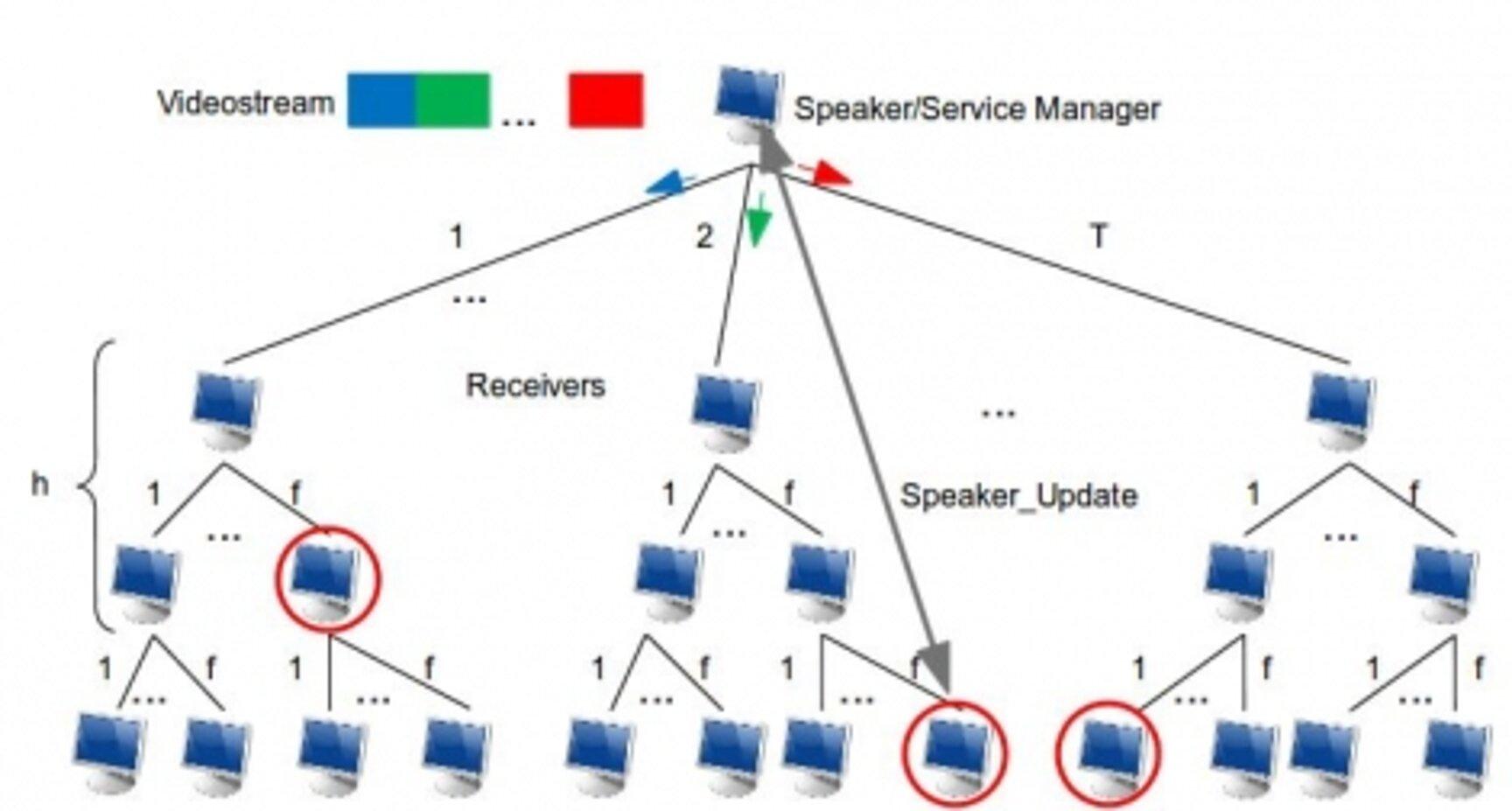Motivation
Conversational services over the best-effort Internet is becoming more and more predominant with services like skype, google chat seeing wide-spread use. Recent standardization activities such as RTCWeb further aim to permeate Internet conversation directly into the browser, making a whole range of new applications possible. One of the challenges in delivering Internet conversation is to provide a service that has a quality comparable to that of the public switched telephone network (PSTN). The Internet is by design a best-effort network. The available bandwidth must therefore be shared with many other classes of applications and congestion adversely affects the quality of experience. Further, conversational services have strict timing requirements where media that arrives late is of little or no use to the receiver. This creates a challenging environment for the deployment of conversational services.
Group Communication over the Internet is a specific form of Internet Conversation which is becoming more predominant. Typically there is a large number of participants that view the content in real-time and may or may not interact. Examples of this include video conferencing and virtual class rooms.
Group communication typically requires a supporting infrastructure which meets the constraints of the provided service. In order to avoid the deployment and maintenance of costly infrastructure, P2P delivery architectures such as Overlay Multicast can be used to distribute the load and create a system that is scalable, yet meets the delay requirements of the application if carefully designed.
The lack of Multicast deployment lead to the development of a new research area in which the Multicast functionality was moved to the application layer. This is referred to as End System Multicast or Application Layer Multicast. Participants of the media session are structured in a virtual topology (e.g. a tree or mesh) above the physical topology of the network.

The challenge in using Application Layer Multicast for real-time communication lies in designing a system that is able to scale to a large number of participants, while at the same time ensuring an acceptable end-to-end-delay. Handling congestion in the network and flash crowds present other challenging aspects in designing such a system.
The use of Scalable Video Coding (SVC) [1] with unequal error correction, as well as layer prioritization, enables advanced video conferencing and video group communication in ALM-based transmission, which is one of the main topics we are working on.
The standard Real-time Transport Protocol (RTP) and and associated control protocol RTCP [2] are not designed to send an RTP stream over multiple Internet paths. The IETF Multipath RTP (MPRTP) draft [3] is an extension to RTP which allows an RTP stream to be sent over multiple paths for the purpose of increased reliability and throughput. Further, each path has it's own characteristics, which are reported using the MPRTCP extension. The use of MPRTP requires additional signaling which is covered in [4]. The combination of SVC, ALM and MPRTP allow the construction of live group communication systems, that are scalable. Current research is investigating how MPRTP/MPRTCP can be leveraged to optimize media delivery in ALM-based group communication systems.
Related Publications
2011
Ralf Globisch, Varun Singh, Thomas Wiegand and Thomas Schierl:
Architecture for Asymmetric P2P Group Communication,
Proceedings of Principles, Systems and Applications of IP Telecommunications (IPTComm 2011), Chicago, IL, August 2011.
2010
Yago Sanchez, Cornelius Hellge, Thomas Schierl, and Thomas Wiegand:
P2P Group Communication with Layer-Aware FEC,
ACM Multimedia 2010, Workshop on Advanced video streaming techniques for peer-to-peer networks and social networking 2010, Firenze, Italy, October 2010.
2007
Pierpaolo Baccichet, Thomas Schierl, Thomas Wiegand, and Bernd Girod:
Low-delay Peer-to-Peer Streaming using Scalable Video Coding,
Packet Video Workshop 2007, in Proceedings Packet Video 2007, Lausanne, Switzerland, pp. 173 – 181, November 2007.
References
- Advanced Video Coding for Generic Audiovisual Services, ITU-T Rec. H.264 and ISO/IEC 14496-10 (MPEG-4 AVC), ITU-T and ISO/IEC JTC 1, Version 1: May 2003, Version 2: May 2004, Version 3: Mar. 2005, Version 4: Sept. 2005, Version 5 and Version 6: June 2006, Version 7: Apr. 2007, Version 8 (including SVC extension): Consented in July 2007.
- H. Schulzrinne, S. Casner, R. Frederick, V. Jacobson, “RTP: A Transport Protocol for Real-Time Applications”, IETF, July 2003, tools.ietf.org/html/rfc3550
- V. Singh, T. Karkkainen, J. Ott, S. Ahsan, L. Eggert, "Multipath RTP (MPRTP)", IETF, Audio Video Transport - Core Group, draft-singh-avt-mprtp-05, July. 2012, tools.ietf.org/html/draft-singh-avt-mprtp )
- V. Singh, J. Ott, T. Karkkainen, R. Globisch, T. Schierl, “Multipath RTP (MPRTP) attribute in Session Description Protocol”, draft-singh-mmusic-mprtp-sdp-extension-00, July 9, 2012 tools.ietf.org/html/draft-singh-mmusic-mprtp-sdp-extension-00
- Ralf Globisch (Fraunhofer HHI), Varun Singh (Aalto), and Thomas Schierl (Fraunhofer HHI), "Architecture for Asymmetric P2P Group Communication", IPTComm 2011, August 2011, Chicago, IL, USA.